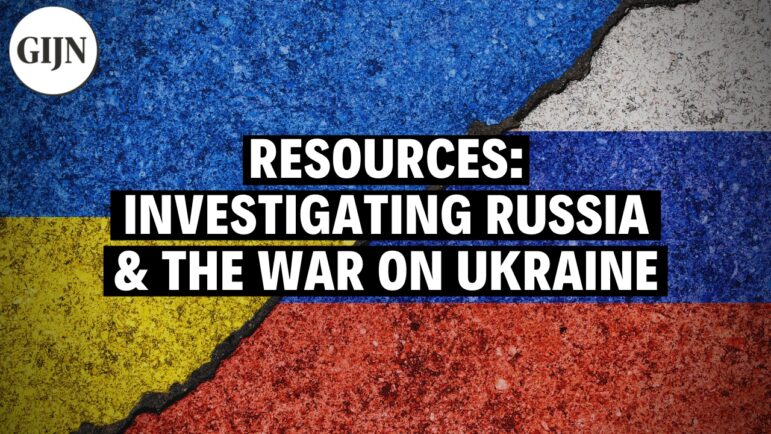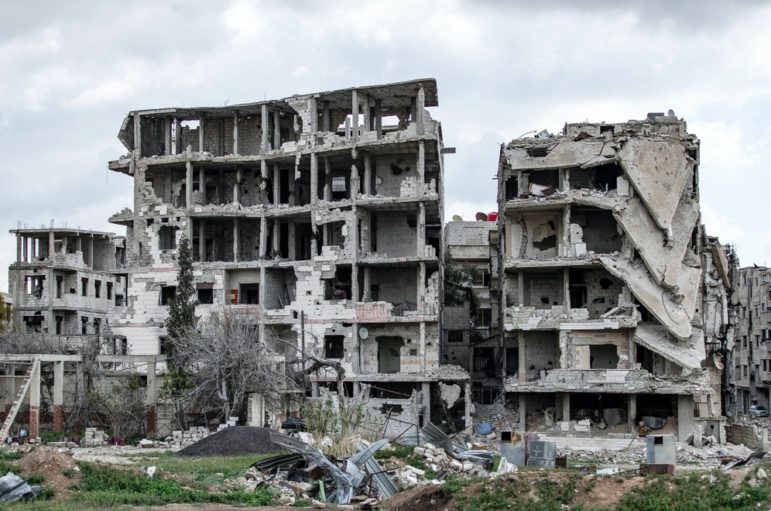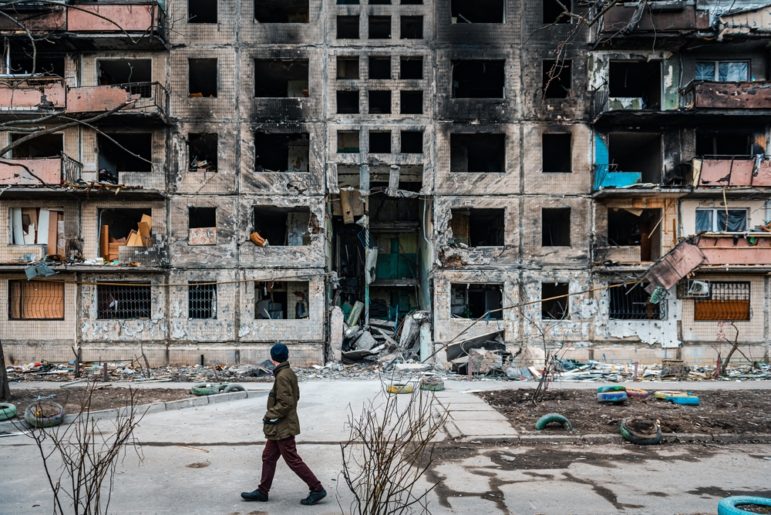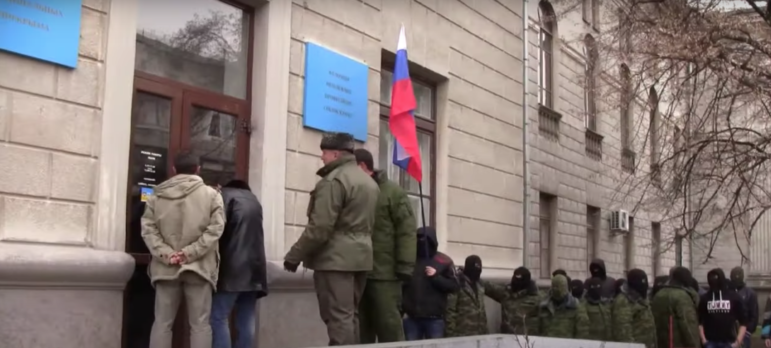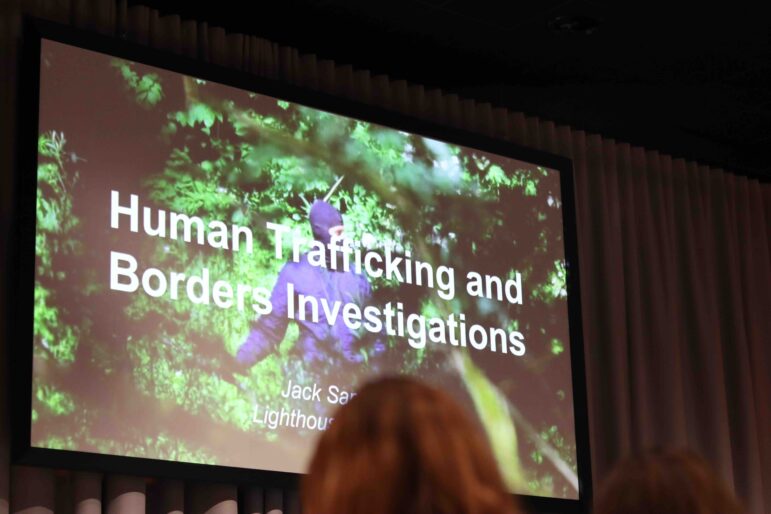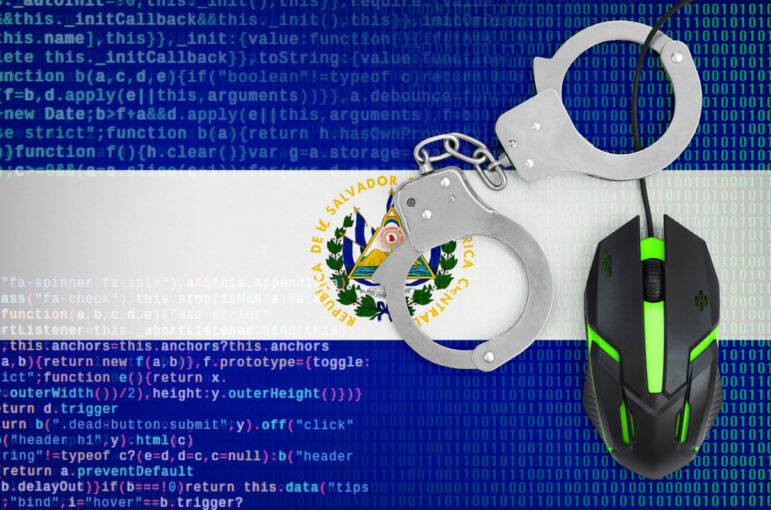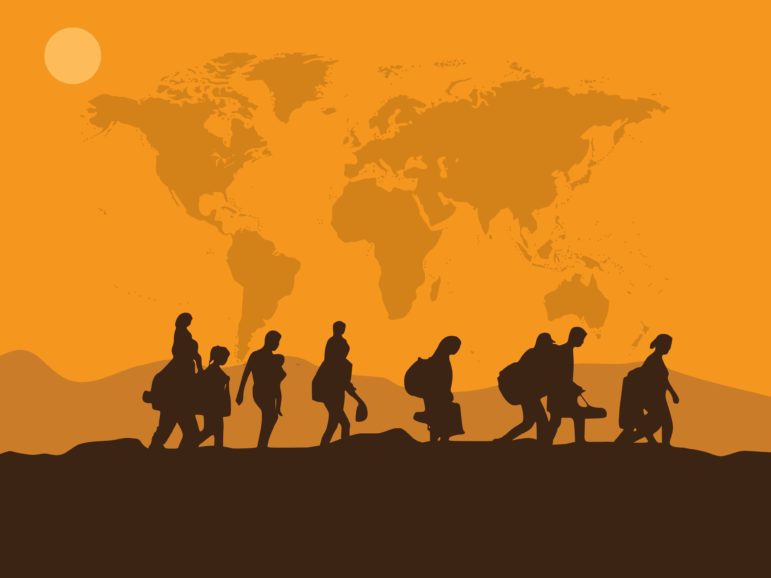

Image: Shutterstock
9 Best Practices for Investigating Refugee Issues
Guide Resource
Investigating Russia and the War in Ukraine
Chapter Guide Resource
9 Best Practices for Investigating Refugee Issues
Chapter Guide Resource
Lessons Learned from Syrian Journalists Investigating Russian War Crimes
Chapter Guide Resource
Investigating Russia Around the World: A GIJN Toolkit
Chapter Guide Resource
15 Tips for Investigating War Crimes
Chapter Guide Resource
Amateur Open Source Researchers Go Viral Unpacking the War in Ukraine
Chapter Guide Resource
Essential Steps for Journalists in Emergency Situations
Chapter Guide Resource
Bellingcat’s Grozev on Investigating Russia’s Invasion of Ukraine
Chapter Guide Resource
Tips for Archiving Telegram Messages on Russia-Ukraine War
Chapter Guide Resource
Journalism Resources for Tracking Events in Ukraine
Chapter Guide Resource
10 Tips for Tracking Russian-Owned Assets
Chapter Guide Resource
Digging Into the Disinformation Campaign Behind Russia’s War on Ukraine
Chapter Guide Resource
Video: GIJC23 – Resources for Investigating Russia
Chapter Guide Resource
Video: GIJC23 – Best Investigations on Russia’s War on Ukraine
The forced displacement of millions of people spurred by Russia’s invasion of Ukraine is putting a fresh spotlight on the experiences and differing treatment of refugees and asylum seekers around the world.
In just a few months, a stunning number of people — more than 6.5 million — have sought refuge outside Ukraine and been able to legally enter neighboring states where they have been welcomed with an outpouring of support.
But many of the roughly 31 million refugees and asylum seekers counted by the United Nations High Commissioner for Refugees (UNHCR) prior to Russia’s invasion – from places like Syria, Afghanistan, South Sudan, Venezuela, and Myanmar – are forced to take irregular or perilous migration routes to reach countries where they can seek protection. Along the way, they are vulnerable to exploitation and abuse from smugglers and criminal groups, including human trafficking, and face harsh border policies and violence from state security forces.
All of this plays out in border regions that are often hard to access and in the shadows of underground economies. The people involved frequently lack a clear legal status or the support of home countries that will advocate for their rights. At the same time, migration is a polarizing issue that is often the subject of deliberate misinformation and political hysteria. The topic is also intrinsically connected to global conversations taking place about the continued impacts of racism and colonialism and the perpetuation of power imbalances between the Global South and Global North.
The possibilities for investigations are rich: exposing chronic corruption in refugee resettlement programs; revealing who profits from smuggling; investigating the fate of people who go missing at sea; and documenting human rights abuses at borders, to name a few examples.
The process of uncovering these stories relies on many of the same techniques and tools as any other form of investigative journalism: systematic, in-depth reporting; scrutinizing public records and data; cultivating reliable sources over extended periods of time. However, the specific context surrounding issues relating to refugees and asylum seekers mentioned above creates unique challenges and potential pitfalls. Here are some best practices to keep in mind:
1. Follow Trauma-Informed Reporting Guidelines
This is a basic one, but important to reiterate in the context of investigating issues related to refugees and asylum seekers: The experiences that force people to flee their homes are traumatic, and refugees and asylum seekers often continue to be exposed to further trauma and abuse at each step of their journeys. Being cognizant and sensitive to this is essential.
As a result, when interviewing refugees and asylum seekers it is important to follow best practices for trauma-informed and less-extractive reporting. There are numerous guides and webinars online that can serve as helpful resources.
2. Establish Realistic Expectations with Sources
This is also particularly important when talking to people in vulnerable situations, like many refugees and asylum seekers. While reporting, I have encountered both eager and hesitant sources in refugee communities, with responses ranging from “Please tell our story so the world knows what’s happening and can help us” to “Why should I share my story with you? I’ve talked to so many journalists already and nothing has changed.”
To overcome any reluctance, it can be tempting to reach for the highest ideals of journalism and make promises about how one story can make a difference. In reality, this is rarely how things work. Promising outcomes that we can’t guarantee only gives people false hope and results in disillusionment and anger when those hopes are dashed. It’s much better to be honest — if not blunt. Tell people that you will do your best to do justice by the experiences they share with you, but that you are also well aware of the limitations of our profession. More often than not, I’ve found that candor builds trust and results in people being more willing to speak.
3. Familiarize Yourself with Legal Frameworks
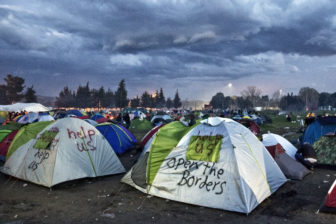
IDOMENI, GREECE. In 2016, thousands of refugees trying to reach Western Europe were stranded at the borders of northern Greece.
The UN’s 1951 Refugee Convention and its 1967 Protocol form the legal foundations of the international protection system. Other key principles are contained in the 1948 Universal Declaration of Human Rights and in international humanitarian law. Combined, these legal principles and norms lay out a clear right for people to flee war and persecution in their home country and seek safety in other states. Crucially, they also prohibit states from returning asylum seekers and refugees to countries where they might face danger or persecution.
Not all states, however, have signed on to the UN’s conventions, and some countries have developed domestic legislation to extend or limit protections in various circumstances. Overall, adherence to refugee law can be difficult to enforce because of the limited jurisdiction of national courts and the ineffectiveness of international courts. This means that – despite there being protections laid out – refugees and asylum seekers frequently find themselves in a legal black hole. Interviewing experts, lawyers, and NGO staff who study – and try to find ways to close – this accountability gap can help you navigate this complex picture and determine what types of potential violations are taking place.
4. Learn the Terminology
Legally, a refugee is “someone who is unable or unwilling to return to their country of origin owing to a well-founded fear of being persecuted for reasons of race, religion, nationality, membership of a particular social group, or political opinion,” according to the 1951 UN Convention. Colloquially, however, the term is used to refer to anyone fleeing war or persecution. Meanwhile, asylum seekers are refugees who have left their homes in search of protection but have not yet had their status recognized by the UN or a host country. And “migrant” is an umbrella term used to refer to people moving across – or sometimes within – state borders for various reasons.
In reality, the reasons why people leave their homes are complex and defy simple categorizations. Meanwhile, the terminology used to refer to people who are moving across borders – such as “illegal aliens” instead of “undocumented migrants” or just “people on the move” – is politically charged and often used to dehumanize. At the end of the day, refugees, asylum seekers, and migrants all have individual experiences and stories, and understanding the terminology that is used to categorize them – as well as the baggage associated with it – is important to avoid perpetuating dehumanizing narratives.
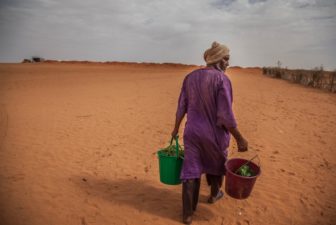
Man carrying vegetables at the M’bera refugee camp in southeast Mauritania. Image: Jose Cendon / EU Civil Protection and Humanitarian Aid (Creative Commons)
5. Locate Reliable Data and Maintain a Critical Eye about Its Presentation
Because the movement of refugees and asylum seekers frequently takes place outside of official border crossings and in areas where it is hard for NGOs or other independent groups to monitor, it can be difficult to find reliable data about how many people are moving and what is happening to them along the way. The UNHCR collects statistics about displacement and the movement of refugees worldwide, and the UN’s International Organization for Migration (IOM) aggregates data on people who die or go missing while migrating. Both agencies publish weekly, monthly, and yearly snapshots, overviews, and reports about specific contexts that are useful resources for keeping track of refugee and migration trends. Government agencies – often ministries of interior – in various countries also collect information about irregular migration and border enforcement.
However, it’s important to engage with data about migration with a critical eye because it often only shows a snapshot of what is happening, frequently contains gaps, and can be presented in ways that further the interests of the international organizations or government agencies that are collecting it. For example, the fact that there are now 100 million forcibly displaced people around the world will likely be an often cited statistic from UNHCR. More than half of those are internally displaced people who are subject to an entirely different legal framework than refugees and asylum seekers.
Similarly, the US border patrol collects data on “enforcement encounters” but does not indicate how many of those encounters involve people who try to cross the border and are apprehended more than once, contributing to an inflated sense of the number of people attempting to enter the country irregularly.
6. Follow the Money
Massive amounts of money are spent on both humanitarian responses to displacement and government efforts to control migration. Inevitably, this means that corruption, waste, misallocation of funds, and fraud are all likely to take place. Journalists have a role to play in holding aid groups, governments, and international institutions accountable. Tracing the money through publicly available databases that many governments and donor institutions are required to maintain can provide rich material for investigations. There are also numerous NGOs and investigative journalism outlets, such as StateWatch, The Transnational Institute, and Lighthouse Reports, that act as watchdogs providing insight into how money is being spent (or misspent), who is profiting, and how special interest groups are influencing public policy.
7. Report from the Ground as Much as Possible
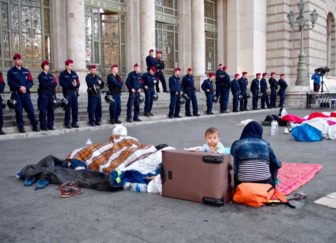
Syrian refugees blocked from entering Keleti train station in Budapest, Hungary. Image: Michael Gubi (Creative Commons)
While a lot of investigative work can be done remotely by sifting through data and poring over open source information, it’s important to report from on the ground as well. As previously mentioned, investigations about refugees often involve actions taking place in remote border regions. From afar, it can be difficult to get a clear idea of what is happening, and the lack of reliable data and prevalence of misinformation can further obscure the picture. The surest way to remedy this is by traveling to border regions and speaking directly to the people observing what is happening first-hand. A story by Der Spiegel and Lighthouse Reports, which revealed the involvement of European security forces in human rights abuses at the EU’s external borders, is a great example of the kind of investigative work that can be done on the ground.
8. Aggregated Data and Patterns Are Your Friends
When it comes to places that are difficult to report from – because governments bar journalists from accessing the area, the terrain is hostile or remote, or the presence of armed groups makes it unsafe – aggregate data can be a powerful tool to determine what is taking place. There are also great examples of investigative reporting using this technique to reveal information about human rights violations against refugees and asylum seekers taking place at the EU’s external borders.
One individual testimony from a remote border region can be difficult to corroborate. But dozens or hundreds of similar testimonies collected over time can establish a clear pattern of behavior that can be used to expose wrongdoing and to push for perpetrators to be held accountable.
9. Stay Away from Natural Disaster Analogies
I’m far from the first person to make this point, but it bears repeating. When people are forcibly displaced and begin to cross borders, headlines talking about “floods,” “waves,” and “tides” of people threatening to “inundate,” “swamp,” or “overwhelm” areas inevitably begin to appear. These analogies dehumanize refugees and asylum seekers by equating them to destructive natural forces and positioning them as a problem that is best kept at bay. This, in turn, can fuel anti-refugee sentiment or xenophobic extremism and helps pave the way for hardline policies.
Being aware of the language you use when reporting on refugees and asylum seekers, and presenting the results without bias or stoking fear can help you steer clear of perpetuating problematic journalistic practices, humanize the people you are talking about, and help your investigation have its intended impact.
Additional Resources
GIJN’s Migration Reporting Guide: Sources, Guidelines, Contests
Reporting on Migration in the Gulf: A Revised and Expanded GIJN Guide
Mapping Migration Deaths with GIS Modeling
‘Leading with Empathy’ when Writing about Displaced People
Eric Reidy is an award-winning journalist and the migration editor-at-large for the nonprofit New Humanitarian, an independent, GIJN-member news organization that focuses on the multibillion-dollar emergency aid industry. Reidy has reported on migration extensively for the past eight years, in the Mediterranean, at the US-Mexico border, and globally.

